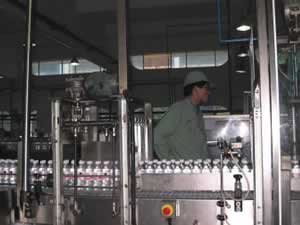Wahaha's expansion is no laughing matter
By Paula M. Miller (China Business Review)Updated: 2007-06-08 09:34
Today, Wahaha's corporate headquarters are still in Hangzhou, and the company has roughly 70 subsidiary companies and 40 manufacturing bases scattered throughout China. Wahaha employs about 10,000 staff and its sales networks cover every county in China. One-third of the company's production occurs at its largest facility - in Hangzhou's Xiasha Economic and Technological Development Zone.
 |
| Wahaha's Hangzhou Xiasha Economic and Technological Development Zone Facility. |
Although the state owns a majority share, the company is also foreign- and group-invested. Perhaps because it is often said that the state holds a "passive stake" in Wahaha and because Zong - the company's founder, chair, and general manager, who was sent to labor in the countryside for years during the Cultural Revolution and thus received only a junior-high-school education - has played such a large role in the company's development, Wahaha is often regarded as a private enterprise.
Wahaha is now carefully expanding beyond the mainland. It works with a trading and distribution company in Taiwan and in July completed a factory for its cola products in Indonesia. Wahaha products are on sale in France, Germany, Hong Kong, Italy, Japan, Malaysia, the Netherlands, Spain, Taiwan, Thailand, and the United States. But Shan Qining, Wahaha's Foreign Liaison Office vice director notes, "The hardest part of going global is handling new markets. For example, it would be easier for Wahaha to sell products in Southeast Asia than in the West. The move is less risky because many Chinese are already in Southeast Asia. To target US customers, we will likely need to alter products to suit their tastes."
From milk to Future Cola
Wahaha currently produces 30
varieties of milk and yogurt drink, purified and mineral water, carbonated soft
drink, fruit and vegetable juice, sports drink, and tea, as well as congee (rice
porridge), canned food, and health products, such as children's vitamins. In
2002, the company further diversified into children's clothing. It may soon
develop personal care products, including shampoo and toothpaste.
According to Shan, the company's hottest-selling products in China are
bottled water and vitamin-enhanced milk drinks (the state has approved the sale
of Wahaha's vitamin-enhanced milk in schools nationwide). He elaborated,
"Wahaha's milk products and bottled water are strong sellers - our main
challenge is to increase our cola sales. Chinese consumers are gradually
accepting colas, but which cola brand will they select?"
 | 1 | 2 | 3 | 4 |  |
(For more biz stories, please visit Industry Updates)